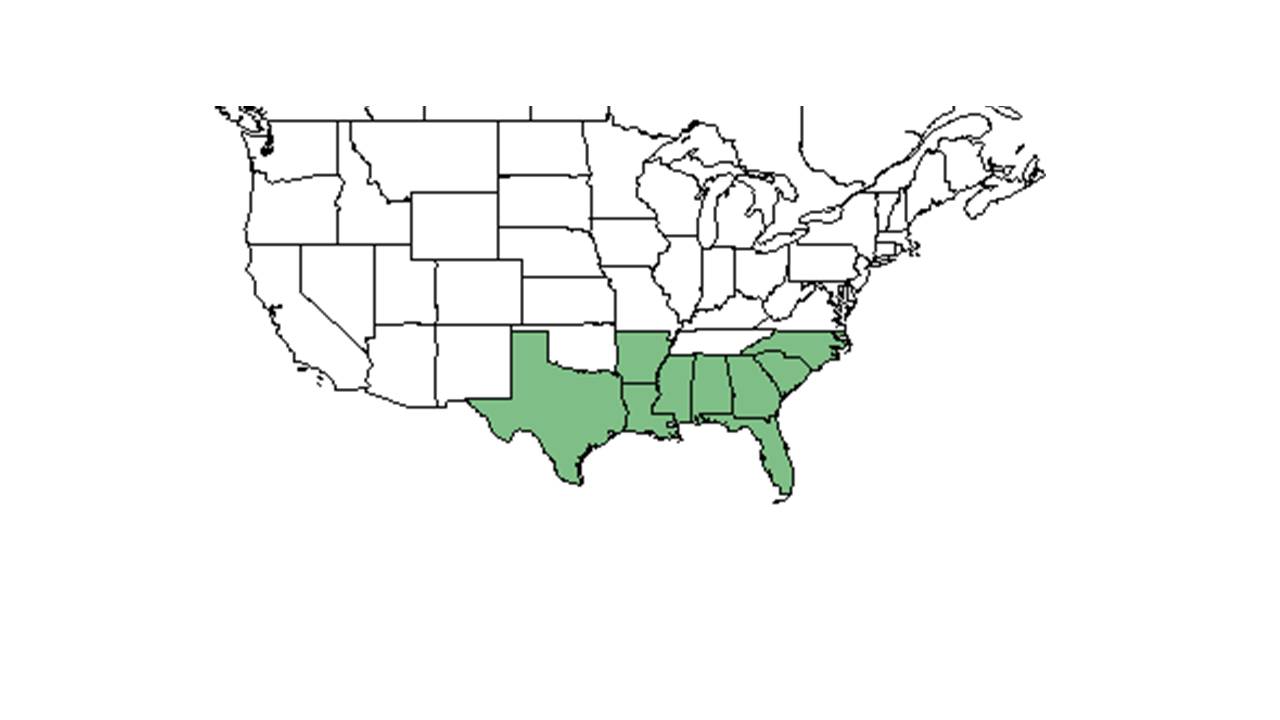Difference between revisions of "Crocanthemum carolinianum"
| Line 35: | Line 35: | ||
''C. carolinianum'' can be found in longleaf pine-wiregrass savannas, as well as some disturbed areas, like mowed areas and fields (FSU Herbarium). | ''C. carolinianum'' can be found in longleaf pine-wiregrass savannas, as well as some disturbed areas, like mowed areas and fields (FSU Herbarium). | ||
| − | ===Phenology=== | + | ===Phenology=== <!--Timing off flowering, fruiting, seed dispersal, and environmental triggers. Cite PanFlora website if appropriate: http://www.gilnelson.com/PanFlora/ --> |
Flowering has been observed in February, March, and April (FSU Herbarium). | Flowering has been observed in February, March, and April (FSU Herbarium). | ||
<!--===Seed dispersal===--> | <!--===Seed dispersal===--> | ||
<!--===Seed bank and germination===--> | <!--===Seed bank and germination===--> | ||
| − | ===Fire ecology===--> | + | ===Fire ecology===<!--Fire tolerance, fire dependence, adaptive fire responses--> |
This species occurs in habitat that burns frequently (FSU Herbarium). | This species occurs in habitat that burns frequently (FSU Herbarium). | ||
<!--===Pollination===--> | <!--===Pollination===--> | ||
Revision as of 17:40, 2 March 2016
| Crocanthemum carolinianum | |
|---|---|
Error creating thumbnail: Unable to save thumbnail to destination
| |
| Photo was taken by Gil Nelson | |
| Scientific classification | |
| Kingdom: | Plantae |
| Division: | Magnoliophyta - Flowering plants |
| Class: | Magnoliopsida – Dicotyledons |
| Order: | Violales |
| Family: | Cistaceae |
| Genus: | Crocanthemum |
| Species: | C. carolinianum |
| Binomial name | |
| Crocanthemum carolinianum (Walter) Michx. | |

| |
| Natural range of Crocanthemum carolinianum from USDA NRCS Plants Database. | |
Common name: Carolina frostweed
Contents
Taxonomic notes
Synonym: Helianthemum carolinianum (Walter) Michaux
Description
Crocanthemum carolinianum is a perennial herbaceous species.
Generally, for the Crocanthemum genus, they are erect, heraceous or suffrutescent perennials with alternate, stellate-pubescent leaves. There are two types of flowers, chasmogamous and cleistogamous. Chasmogamous flowers are on the pedicels that elongate to usually more than 1 cm long with large showy, tallow petals; there are numerous stamens and large sepals. The cleistogamous flowers are on the pedicels are usually less than 3 mm long, where the petals are absent, the stamens are few and the sepals are smaller than those of the chasmogamous flowers. The sepals are in 2 whorls, the outer are narrower than the inner. The capsule is 3-locular (Radford 1964).
Specifically, for Crocanthemum carolinianum species, the roots have tuberous thickenings, the stems grow 1-3 dm tall, are pilose, arising from a basal rosettes of leaves. The leaves are widely elliptic to obovate, or nearly lanceolate, growing 2-5 cm long, and 0.7-2 cm wide, stellate pubescent on both surfaces, with longer trichomes above; basal leaves are often somewhat erose,usually larger than the stem leaves; the petioles grow 1-3 mm long. The cleistogamous flowers are absent. The chasmogamous flowers are solitary, are opposite a leaf (or appearing internodal). There are 6 sepals, the outer 3 linear, growing 5-10 mm long, are acute to acuminate, stellate pubescent; the petals growing 1.5-2 cm long. The capsules are globose to subglobose, growing 7-9 mm long. The seeds are reddish black in color, papillose, and growing 0.8-1 mm long (Radford 1964).
Distribution
Ecology
Habitat
C. carolinianum can be found in longleaf pine-wiregrass savannas, as well as some disturbed areas, like mowed areas and fields (FSU Herbarium).
Phenology
Flowering has been observed in February, March, and April (FSU Herbarium).
Fire ecology
This species occurs in habitat that burns frequently (FSU Herbarium).
Conservation and Management
Cultivation and restoration
Photo Gallery
References and notes
Florida State University Robert K. Godfrey Herbarium database. URL: http://herbarium.bio.fsu.edu. Last accessed: June 2014. Collectors: Robert K. Godfrey, Chris Cooksey, R. Komarek, Loran C. Anderson, and Richard R. Clinebell II. States and Counties: Florida: Leon. Georgia: Grady and Thomas.
Radford, Albert E., Harry E. Ahles, and C. Ritchie Bell. Manual of the Vascular Flora of the Carolinas. 1964, 1968. The University of North Carolina Press. 718-9. Print.